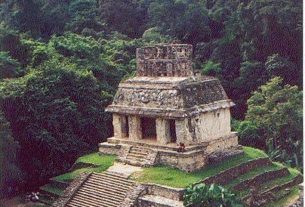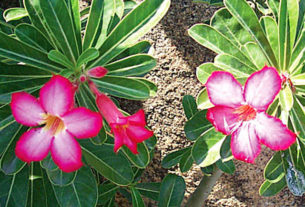A family with creamy brown skin walks by, holding hands, swinging arms. Laughing aloud. They are arranged like stair steps – father, mother, big daughter and little daughter, who look to be around ages eight and four. Their small bodies reach the plaza corner where they turn to the wide path that leads inward, to the fountain. There is one step down. They break hands, arrange the children in the middle and stand on the edge of the step in a line. “Uno, dos, tres …!” they laugh and jump off the step together. They join hands once again and continue their walk.
Journal, June 6, 2003
To write of Pátzcuaro is to relay scene after scene of joy and color and texture, sin gringos. Their simple tourist brochure has as many mistakes in the English translation as we would make in Spanish. We take that as a good omen. This place is undeniably Purépecha Indian and Mexican. Through and through.
We stay on the Plaza Vasco de Quiroga in the Hotel Los Escudos. A place that tingles the muse. Old, tiny rooms, tiles, flowers, painted murals. Ask for a quiet room and you will get it. (No English spoken here, as in most of Pátzcuaro.) Step outside the Hotel onto the Plaza, and you become a player in one of the liveliest, most appealing scenes in Mexico. At dawn’s first light they arrive. The short, fat Indian woman dressed in a lime green nylon walking suit with black, straight hair that falls to the back of her knee. The stooped over woman in her 80’s who walks and runs and walks and runs.
The old man who emerges from a side street walking fast with a humongous bread basket on his head. He reaches the Plaza and joins the fun, breaking into a jog in front of the statue of Bishop Quirioga. Uniformed children on their way to school, accompanied by a parent. A woman on a mountain bike who gently scoops water from the fountain into plastic buckets and continues on her way. Over a hundred joggers and walkers make their way round and round the spacious, grass-lined concrete promenade under a canopy of pine and ash trees. The same fiesta of exercisers and heart-rate moniters occurs at evening, when the singles crowd joins in. Poodles and dachshunds appear. Lively conversation. Old couples with arms around one another. Children ride bikes, singing as they peddle. And this is a weekday!
History equals magic in this high mountain place, settled by the Purépecha Indians, developed around the spirits of revolutionaries. Bishop Don Vasco de Quiroga, who arrived in 1537, devoted his life to restoring dignity to the Spanish-tortured Purépecha. His efforts to establish this place around an economy of Indian crafts permeate every step.
In another Plaza a short walk from here stands a grand statue of another champion, Gertrudis Bocanegra, a local heroine who refused to divulge revolutionary secrets to the Spaniards and was shot in 1814. The Basilica is called Our Lady of Health.
Inside stands the Virgin of Health, her statue made of cornstalks and orchids. Walkways lead me up and down cobblestone streets and alleys, amidst 16th century buildings. I feel I am in Renaissance Italy. From high points I look down upon stunning red tile roofs. Lake Pátzcuaro shines blue in the distance.
Tom and I climb hundreds of little steps to reach a place to view the sunset over the lake. Little boys play ball behind us. I take out a container of bubbles and begin to blow. Their faces light up and they come closer. I give them the bubbles, and they blow and laugh their hearts’ content, never arguing about whose turn it is. It reminds me of the Maya children in Guatemala, raised in contentment against their mothers’ breasts, I witness no whines or tantrums.
We travel the lakeshore, to small Indian villages. One community pounds and shapes copper into enormous tubs, picture frames and bowls. Another weaves straw into beautiful wreaths, Day of the Dead skeletons and baskets. We stop in between villages to walk the shore of Lake Pátzcuaro and bird watch. We pull over to view stunning sculptures of stone, and select a round, cheerful-faced sun with big cheeks for a state-side friend who has the most beautiful cheekbones we know.
The thick-forested mountains delivered the call of the trogon, but no sighting. Birds were plentiful, but we were discouraged by piles of trash that had been dumped along the side roads and in the woods. Plastic – bottles, bags, soiled diapers. I do not recall such trashy scenes from my excursions off the gringo trail. Here, it is not lost on the lakeside communities that some of the villages have only half the men of ten years ago because the environment suffers and they must leave to find work in the cities or north of the border.
Trashy mountains rile me. And I’m used to a lot – I live in New Mexico, where broken beer bottles, bags of trash, old television and bullet-riddled refrigerators dot the landscape. Lake Pátzcuaro and her surrounding mountains have their environmental problems, but I am hopeful. Solutions are in progress. Logging is remedied by intense tree planting. Educational programs are under way to reduce chemical and organic waste that flows into the lake, particularly during rainy season. Filtering dams are constructed on hillsides; two landfills and two sewage treatment plants have recently been built. Lake Pátzcuaro’s growing silt problem receives serious attention and action. This high mountain jewel of a place is like none other … the Lake is the centerpiece of community.
We return to Pátzcuaro and come upon yet another entire plaza lined in glassware – ceramic plates and pots piled high. Colors and patterns and shapes to awe … a sensory overload. I walk around in disbelief. This pottery carried in, carefully unpacked in the morning, only to be packed up and carried home at night. Carts. Horses. Wheelbarrows. Some vehicles. I walk the Plaza in 6:00 a.m. dusk. A full-bodied Mexican man in a navy blue jogging suit runs up from behind and passes me. This muscleman is flanked by two tiny bouncy Chihuahuas. He and dogs jog, then he stops at a concrete bench to stretch. His dogs dance on two legs until he grabs and lifts them onto the bench, where they sit, their bug-eyes on him, panting and … smiling? He finishes his stretches and takes off on his trot. The dogs fly off the bench after him, as he laughs aloud.
Come to Pátzcuaro. Sit on the Plaza and sip a rompope — cappuccino with creamy rum liquor sprinkled with cinnamon. A tall glass wrapped in a woven grass holder. Here, where the world happens by, is Pátzcuaro-Magico. Where images merge with dreams.


